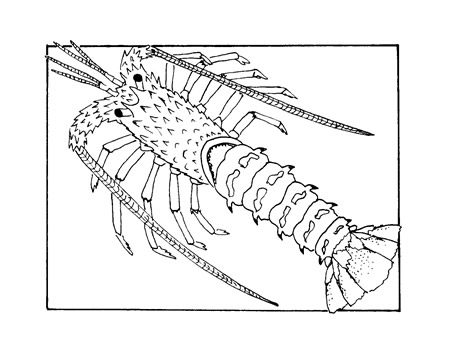Succulent Spiny Specimen

In several places except for Laguna Beach, the California Spiny Lobster (Panuliris interruptus) season has opened. Located along the Pacific Coast from San Luis Obispo to Baja California, California Spiny Lobsters are the only lobster found in California. Observed during the day in beds of surfgrass or gathered in caves and crevasses within rocky reefs, they can live in depths up to 250 feet. Like all anthropods, California Spiny Lobsters have a segmented body and an exoskeleton (hard outer shell) that requires molting as they grow. Colored reddish-brown with orange and black markings, they have spiny protrusions covering most of their body. On the undersides, there are 10 legs used for movement, hunting and reproduction. They lack the large front claws found on other species of lobster. Their two eyes are found on short, moveable stalks on top of the head along with their long antennae. Similar to bees, the eyes provide compound vision and allow lobsters to easily detect movement. With males larger than females, although they have been known to reach between 50 to 100 years in age and three feet in length, the average age is between 10 to 30 years and 12 to 16 inches.





